Biking is a great way to stay active, explore new areas, and even reduce your carbon footprint. But with so many different types of bikes on the market, it can be overwhelming to know where to start while choosing the right one for you.
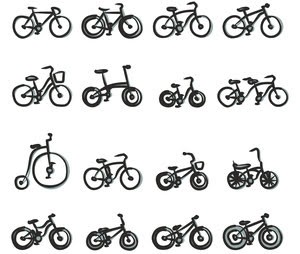
From road bikes to mountain bikes, hybrids to cruisers, each type of bike is designed for specific terrain, riding styles, and purposes.
Therefore, in this article, we’ll explore the different types of bikes available to help you find the perfect ride for your needs, preferences, and budget.
Whether you’re a beginner or a seasoned cyclist, understanding each type of bike can help you make an informed decision and get the most out of your biking experience.
Explore the Different Types of Bikes and Discover Your Perfect Ride
In this section, I’ll enlighten you about the different bike types available, their features, and the types of riding they are best suited for.
So, whether you’re looking for speed, comfort, or adventure, read on to learn about the different bike types available and find the one that’s perfect for your needs.
1. Road Bikes
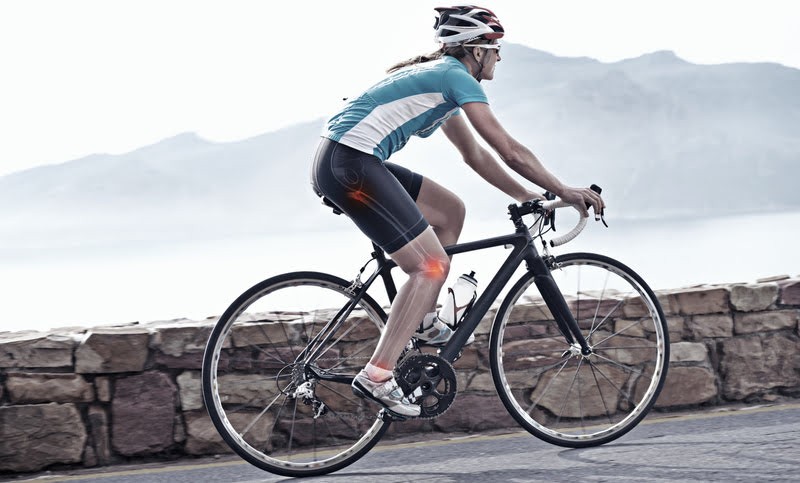
If you’re looking for a bike that offers speed, efficiency, and precision on paved roads, then a road bike may be the perfect choice for you.
These bikes are the most specialized type of bicycle designed to provide maximum performance and comfort for long-distance rides on the tarmac.
Their lightweight frame and narrow tires allow you to move quickly and easily, making them ideal for fitness training or covering long distances.
Additionally, the aerodynamic riding position provided by the drop handlebars helps to reduce wind resistance and improve your overall speed and efficiency.
While road bikes can be more expensive than other types of bikes, there are still plenty of affordable models on the market that offer excellent performance and durability.
And while they may not be designed specifically for racing, they still offer a ride that’s full of pleasure and fun, making them a great choice for recreational riders and enthusiasts alike.
Different Types of Road Bikes
Adventure / Gravel Bikes
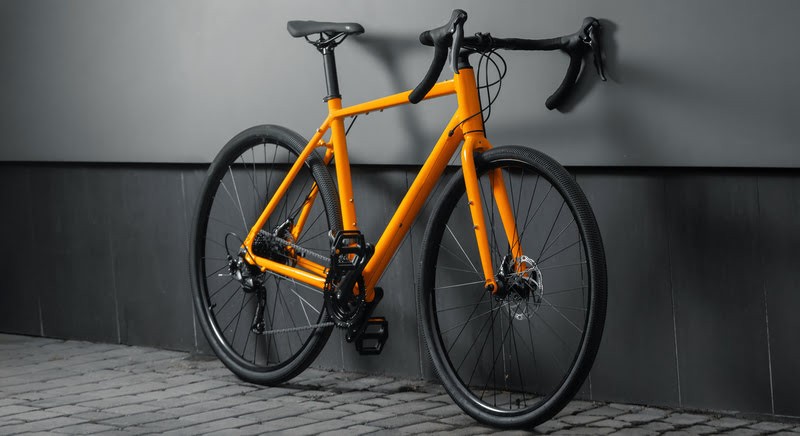
Gravel bikes are designed for riding fast on rough terrains, such as gravel roads, dirt tracks, and forest trails.
They have wider tires and a more relaxed geometry than road bikes for better stability on uneven surfaces. They are often used for bike packing and adventure touring.
Read: The Ultimate Guide to Gravel Bikes — Unleash Your Actual Riding Potential
Cyclocross Bikes
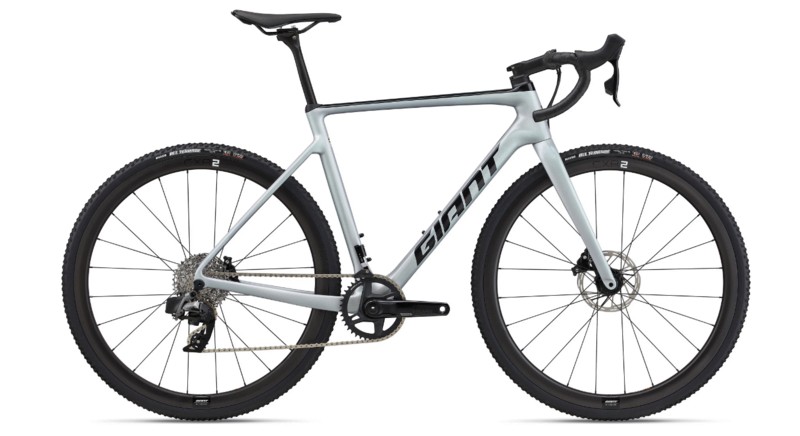
Cyclocross bikes are designed for a racing discipline that combines off-road and on-road riding.
They have wider tire clearance than other road bikes to accommodate mud, sand, and dirt and more powerful brakes for better control in off-road conditions. They typically have a more relaxed geometry than road bikes.
Read: A Guide to Cyclocross Bikes — Best Option for Ultimate Off-Road Racing
Triathlon/Time Trial Bikes
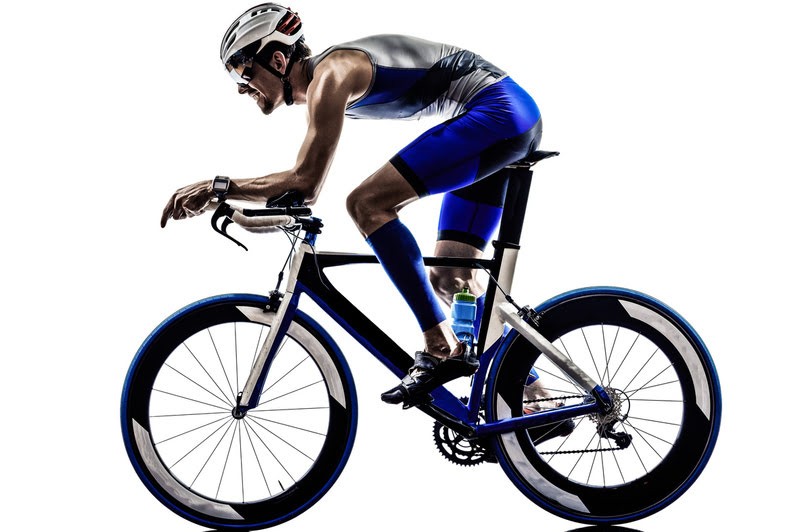
These bikes are a specialized type of road bike designed for triathlons and time trial races.
They have aerodynamic frames that are tested extensively in wind tunnels to reduce air resistance, and they put the rider in a low, aggressive position. They are not ideal for long-distance rides as they prioritize speed and aerodynamics over comfort.
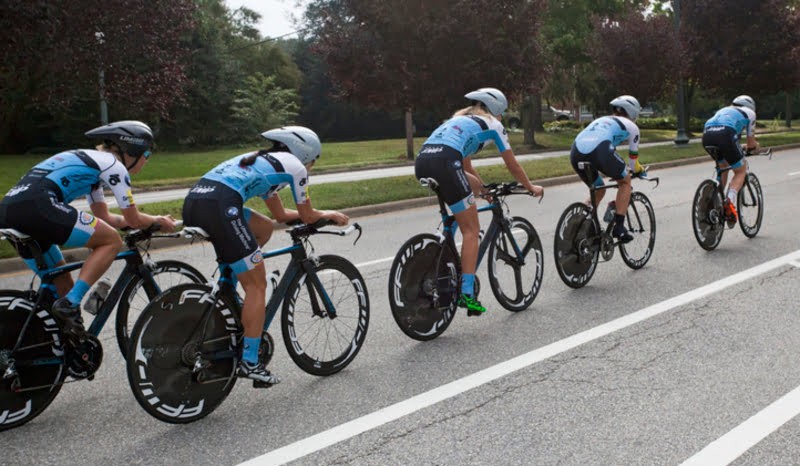
Read: Ultimate Guide to Triathlon Bikes — Power Up Your Performance Now
Touring Bikes
A touring bike is basically designed for long-distance rides and bike touring. They have sturdy frames, wide tires, and a relaxed geometry for maximum comfort.
They typically have a rear rack for carrying panniers, as well as drop handlebars for a variety of hand positions. They prioritize comfort and stability over speed and efficiency.
Read: Unlocking Secrets of Touring Bikes: Types, Dynamic Features, & More
What are Road Bikes Used For?
Road bikes are suitable for intermediate to advanced-level riders who are looking for speed, performance, and endurance in their rides.
They are perfect for those who enjoy long-distance rides on paved roads, road races, triathlons, and group rides.
Who Shouldn’t Use Road Bikes?
Road bikes may not be the best option for beginners or those who are looking for a more casual riding experience.
Due to their aggressive riding position, road bikes can put a lot of strain on your neck, back, and wrists, which can be uncomfortable for some riders. Additionally, their narrow tires make them less suitable for riding on rough or unpaved roads, gravel, or dirt trails.
Read: Road Bike Types in 2023 — Which One is Right For You
2. Mountain Bikes
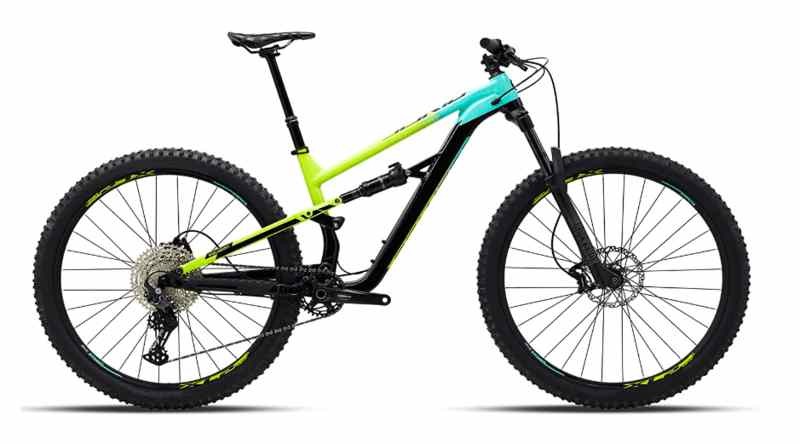
Mountain bikes are a type of bicycle that are built to handle rough terrains, such as dirt trails, rocky paths, and steep inclines. They typically have wide tires with deep treads that provide excellent traction on loose or uneven surfaces.
The frames of mountain bikes are made from durable materials such as aluminum or carbon fiber, which are able to withstand the stresses of off-road riding.
Additionally, many mountain bikes come equipped with suspension systems that help absorb shock and provide a smoother ride over bumpy terrain.
The design of mountain bikes is focused on providing riders with the ability to tackle challenging terrain rather than prioritizing speed or efficiency.
They often have a more upright riding position, which allows riders to maintain better control over the bike and to better navigate obstacles on the trail.
Mountain bikes may also have features such as disc brakes, which provide better-stopping power in muddy or wet conditions.
Types of Mountain Bikes
Full Suspension Bikes
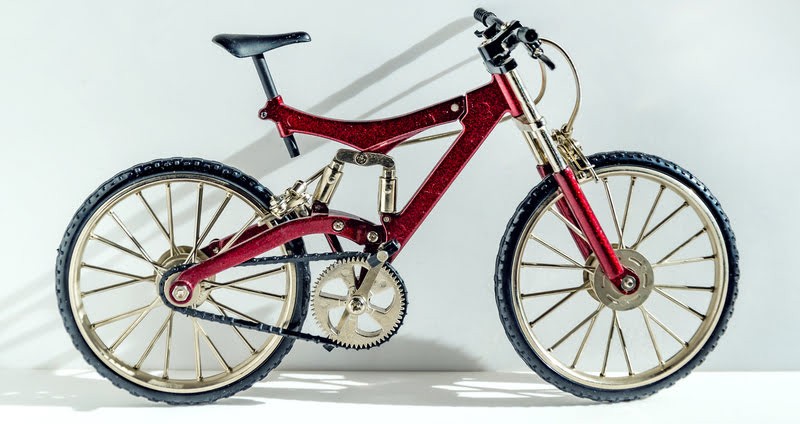
Full-suspension mountain bikes have suspension systems both in the front (fork) and rear of the bike. The suspension helps absorb shocks and vibrations from the trail, providing a smoother ride and better control.
Full-suspension bikes are great for more technical terrain, such as steep descents, rock gardens, or jumps.
Hardtail Bikes
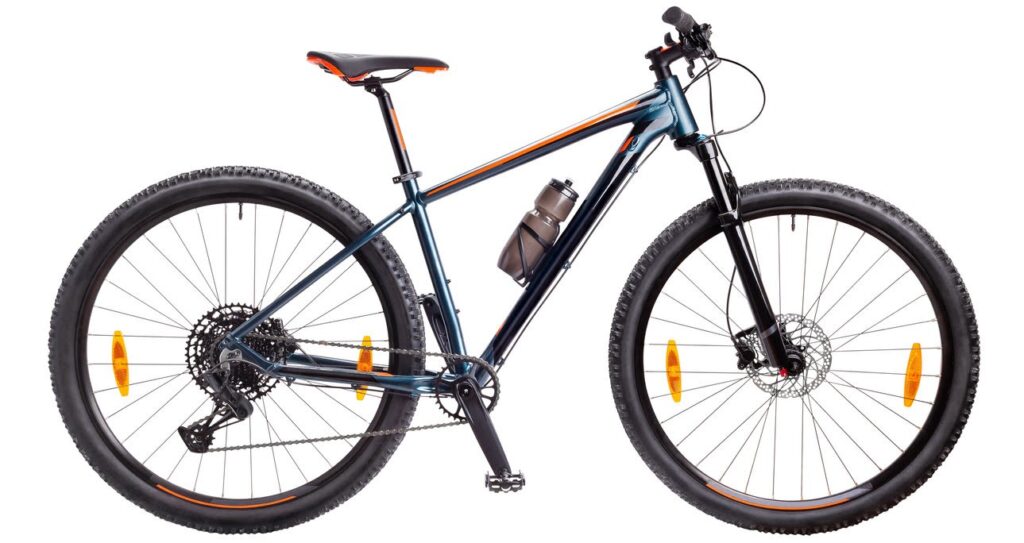
Hardtail mountain bikes have a suspension system only in the front (fork), with a rigid frame in the rear. They are lighter and more efficient than full-suspension bikes, making them a popular choice for cross-country riding or long-distance endurance events.
Hardtail bikes are also more affordable than full suspension bikes, as they require fewer components.
Rigid Bikes
Rigid mountain bikes have no suspension system at all, making them the lightest and most efficient type of mountain bike.
They are often used for commuting, bike packing, or touring, as they require less maintenance and are easier to transport than other types of mountain bikes.
However, rigid bikes can be less comfortable on rough terrain and may require more skill and experience to handle.
Cross Country (XC) Bikes
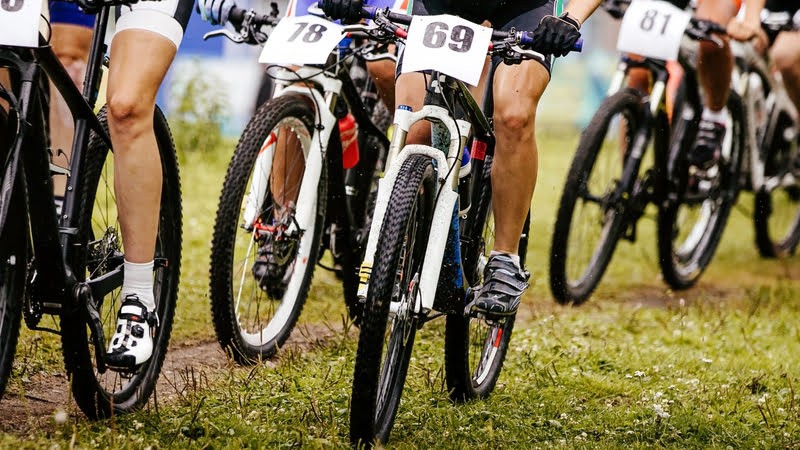
Cross-country mountain bikes are designed for speed and efficiency on smoother, less technical trails. They typically have a lightweight frame and narrow tires, with a shorter travel suspension system (80-120mm) to help absorb small bumps and obstacles.
XC bikes are great for long-distance rides or endurance races, where speed and endurance are key.
Enduro/All Mountain Bikes
Enduro bikes are designed for more aggressive riding on rough terrain. They typically have a longer travel suspension system (120-170mm) and wider tires than XC bikes, making them more capable of handling jumps, drops, and technical terrain.
Enduro bikes are often used for racing, while all mountain bikes are more versatile and can be used for a variety of riding styles.
Trail Bikes
Trail bikes are a versatile type of mountain bike designed to handle a variety of terrain.
They typically have a moderate amount of suspension travel (120-140mm) and wider tires than XC bikes, making them capable of handling technical terrain but still efficient enough for longer rides.
Trail bikes are great for riders who want a balance of speed and capability and are a popular choice for recreational riding.
Downhill bikes
Downhill mountain bikes are built specifically for downhill riding, with a long-travel suspension system (170-200mm) and heavy-duty components.
They are often used for bike parks, shuttle runs, or downhill races, where riders need to descend steep, technical terrain at high speeds.
Downhill bikes are not efficient for uphill riding and are typically transported to the top of the mountain by shuttle or chairlift.
What are Mountain Bikes Used For?
Mountain bikes can be used by anyone who enjoys off-road riding and wants to explore natural terrain. Recreational riders can benefit from mountain bikes as a way to get outside and experience the wilderness.
Fitness enthusiasts can use mountain biking type as a form of exercise to improve cardiovascular health, build strength and endurance, and burn calories.
Adventurers can use mountain bikes for backpacking, camping, and exploring remote trails. Racers can also benefit from using specialized mountain bikes designed for their discipline, including cross-country, enduro, and downhill racing.
Who Shouldn’t Use Mountain Bikes?
While mountain biking can be a fun and rewarding activity, it’s not for everyone. Beginners may find mountain biking challenging, especially if they are not used to off-road riding.
Riders should start with easier trails and gradually build their skills before tackling more technical terrain.
Those with physical limitations, such as chronic injuries, disabilities, or other physical limitations, may find it difficult or unsafe to ride a mountain bike.
Those who prefer paved roads may find that road bikes or hybrid bikes are a better fit for their needs, as mountain bikes are less efficient on paved roads.
Finally, those who are primarily interested in going as fast as possible may not find mountain biking to be as satisfying as other types of bikes designed for speed.
Read: Embrace Great Outdoors with Mountain Bikes and Conquer Any Trail
3. Hybrid/Commuter Bikes

Hybrid bikes, also known as cross bikes or fitness bikes, are bicycles designed for versatility and practicality.
They combine features of road bikes and mountain bikes, allowing riders to enjoy a comfortable and efficient ride on a variety of terrains, including paved roads, gravel paths, and light off-road trails.
Hybrid bikes typically have a lightweight frame, an upright riding position, and wider tires than traditional road bikes, providing more stability and traction. They also feature a flat handlebar, which allows for a more relaxed grip and better control.
Commuter bikes are a type of hybrid bike that may come with additional features such as fenders, racks, and lights, making them a practical choice for daily transportation and commuting.
What are Hybrid/Commuter Bikes Used For?
Hybrid/commuter bikes are versatile types of bicycles that can be used for various purposes. They are often used for commuting to work, school, or running errands due to their comfort and practicality.
People who prefer a comfortable, upright riding position and want to commute on a bike often choose hybrid/commuter bikes.
These bikes are ideal for people who want to incorporate exercise into their daily routine, as well as those who want a more eco-friendly mode of transportation.
They are also suitable for beginners who want to get into cycling but are not ready for the intensity of road or mountain biking.
Who Shouldn’t Use Hybrid / Commuter Types of Bicycles
There are some cases where hybrid/commuter bikes may not be the best choice. For example, if you are looking for a bike to ride primarily off-road or on technical trails, a hybrid/commuter bike may not provide the necessary rear suspension or tire traction.
Additionally, if you are looking for a bike for racing or intense training, a lightweight road bike or a high-performance mountain bike may be more suitable.
It’s important to assess your needs and intended use before choosing a hybrid/commuter bike.
Read: What is a Hybrid Bike — Everything You Need to Know About
4. City Bikes
A city bike, also known as an urban bike, is a type of bicycle designed for everyday riding in urban areas. City bikes typically have a simple, minimalist design that prioritizes comfort and practicality over speed and performance.
They are often used for commuting to work or school, running errands, or leisurely rides around the city.
City bikes usually have an upright riding position, which is more comfortable for urban riding and provides a better view of the surroundings.
They also have wider tires that can handle bumpy roads and potholes. City bikes often come with features like fenders to keep riders clean and dry in wet conditions, racks for carrying bags or groceries, and lights for added visibility during low-light conditions.
Unlike road bikes or mountain bikes, city bikes don’t have aggressive geometries, suspension systems, or high-performance components. They are designed to be practical, easy to use, and comfortable for riders of all ages and abilities.
What is a City Bike Used For?
City bikes are best suited for riders who are looking for an efficient and affordable mode of transportation in the city. They are particularly popular among commuters who want to avoid traffic congestion, parking fees, and the stress of driving.
City bikes are also a great option for riders who want to stay active and enjoy the outdoors while running errands or traveling around the city.
Who Shouldn’t Use City Bikes?
City bikes are not recommended for riders who are looking for high-performance bikes that can handle off-road terrain or competitive riding.
They are also not suitable for riders who prefer a sportier riding position or who need to carry large loads or passengers.
Additionally, city bikes may not be suitable for riders who live in areas with hilly terrain, as they typically have fewer gears than other types of bikes.
Read: Mastering City Bikes: Your Ultimate Guide to Navigating Urban Cycling
5. Ice Bikes

An ice bike is a type of bicycle that is specially designed for riding on frozen surfaces such as ice, snow, and packed trails. Ice bikes feature wider tires with aggressive treads that provide better traction and stability on slippery surfaces.
What is an Ice Bike Used For?
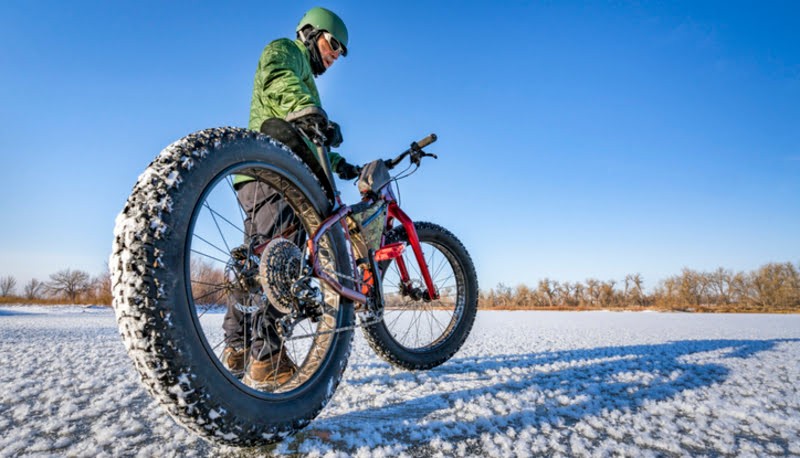
Ice bikes are primarily used for riding on frozen surfaces such as ice, snow, and packed trails.
They are designed to provide better traction and stability on slippery surfaces and are commonly used for recreation, exercise, and commuting during the winter months.
Ice bikes can be used by riders of all ages and skill levels, although they do require some specialized equipment and techniques for safe and enjoyable riding.
They are particularly popular among cyclists who live in areas with harsh winter conditions, such as Canada, Scandinavia, and other northern regions.
Who Shouldn’t Use Ice Bikes?
There are some people who may not be suitable for riding an ice bike. Those who have mobility issues or medical conditions that affect their balance or coordination may not be able to safely ride an ice bike.
Additionally, those who do not enjoy cycling or are not interested in riding during the winter months may not find an ice bike to be a useful investment.
Read: Unlock the Thrills of Winter with Adventurous Ice Bikes
6. Motorised Bikes

A motorized bike, also known as an e-bike or electric bike, is a bicycle with an electric motor and a rechargeable battery. The motor provides assistance to the rider, making pedaling easier and allowing for longer and faster rides.
What is a Motorised Bike Used For?
Motorized bikes can be used for a variety of purposes, including commuting, exercise, leisure, and transportation.
They are especially useful for those who want to travel long distances without the physical exertion of traditional biking or those who need assistance with uphill rides.
People who can majorly benefit from using a motorized bike include commuters who want to avoid traffic and parking problems, seniors or individuals with physical limitations, those who live in hilly areas, and anyone looking for a more environmentally friendly mode of transportation.
Who Shouldn’t Use Motorised Bikes?
There are some individuals who should not use a motorized bike, including young children, those who are not comfortable with operating a motorized vehicle, and those who are not legally allowed to operate one (depending on the laws in their area).
Additionally, those who are looking for a traditional cycling experience or those who prefer the physical exercise of traditional biking type may not find a motorized bike suitable for their needs.
Read: The Best & Worst Fortes About Motorised Bikes (E-Bikes)
7. Kid’s Bikes
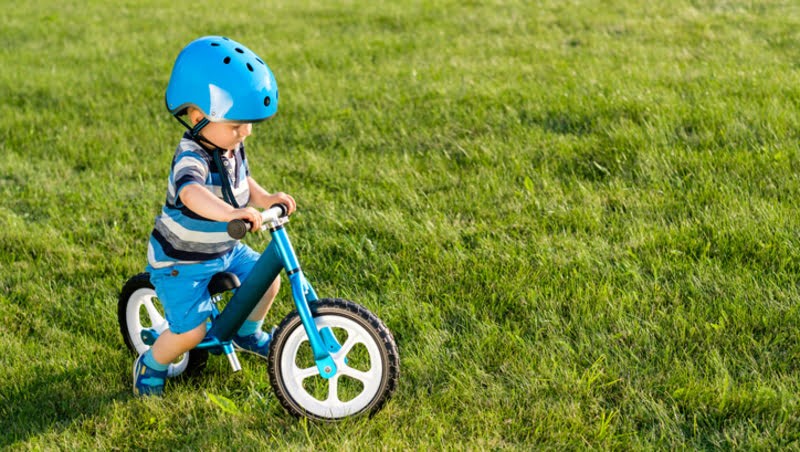
A kid’s bike is a type of bicycle that is specifically designed and manufactured for children.
These bikes are smaller in size and have features that cater to the needs of young riders. They come in various styles and designs and are suitable for different age groups and skill levels.
What is a Kids Bike Used For?
Kids’ bikes are mainly used for recreational purposes, such as riding around the park or neighborhood, going on family bike rides, and participating in youth cycling events. They can also be used for short-distance transportation to school, the playground, or friend’s houses.
Kid’s bikes are suitable for children who have developed the necessary motor skills to ride a bike and are old enough to safely handle one.
Generally, kid’s bikes are designed for children between the ages of 2 and 12. They are also suitable for children who are interested in learning how to ride a bike and develop a passion for cycling.
Who Shouldn’t Use Kid’s Bikes?
Kids who are not yet old enough to ride a bike or lack the necessary motor skills may not be suitable for using a kid’s bike.
It is important for parents to assess their child’s abilities and readiness before allowing them to ride a bike and to provide proper supervision and safety measures to ensure their child’s safety.
8. Track/Fixed-Gear Bikes
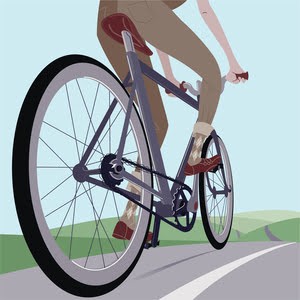
A track/fixed-gear bike, also known as a “fixie,” is a type of bike that features a fixed-gear drivetrain. This means that the pedals and the rear wheel are directly connected, and the bike cannot coast without pedaling.
These bikes are typically designed for use on a velodrome track, but they have gained popularity in urban areas as well.
What is a Track/Fixed-Gear Bike Used For?
Track/fixed-gear bikes are used primarily for racing and riding on a velodrome track, where their design allows for efficient pedaling and high speeds.
In urban areas, they are often used as a low-maintenance and lightweight mode of transportation due to their simple design and lack of gears.
They are also popular with bike messengers and other delivery riders who need a reliable and efficient means of getting around the city.
Due to their fixed-gear drivetrain, track/fixed-gear bikes require a certain level of skill and experience to ride safely. The lack of gears means that riders must be able to control their speed and braking through leg strength and technique, which can take some practice to master.
Riders who enjoy the challenge of fixed-gear riding and want a low-maintenance bike for city commuting may also find these bikes appealing.
Who Shouldn’t Use Track/Fixed-Gear Bikes?
Novice or casual riders may not be comfortable with the lack of brakes and freewheel on these bikes, which can make them difficult to stop and control in certain situations. Additionally, these bikes are not well-suited for hilly terrain, as the fixed gear can make climbing more difficult.
Read: Unlocking the Best Potential of Fixed-Gear Bikes [Complete Guide]
9. Cruiser Bikes
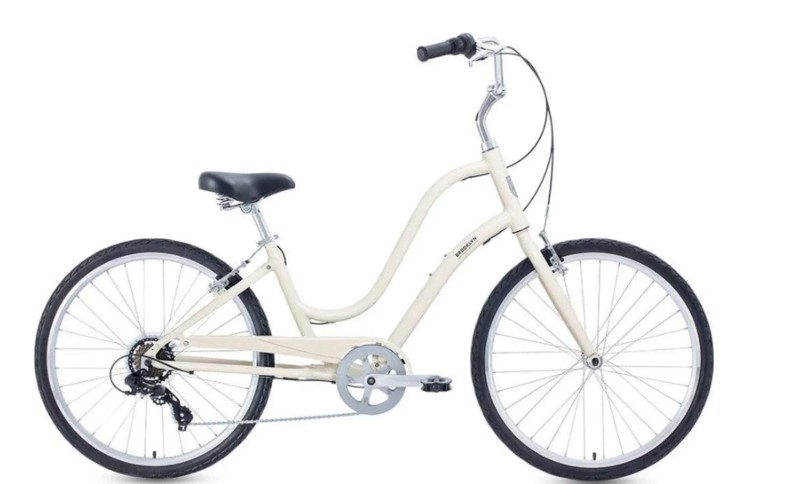
A cruiser bike is a type of bicycle that is designed for casual and comfortable riding. These bikes typically have a relaxed, upright riding position, wide seats, and wide handlebars.
Cruiser bikes are also known for their retro-style design, often featuring curved frames, oversized fenders, and decorative details.
What is a Cruiser Bike Used For?
Cruiser bikes are perfect for those who prioritize comfort and style over speed and performance. These bikes are ideal for leisurely rides on flat terrains, such as the beach or boardwalk, and for short commutes around town.
Cruiser bikes are designed with a relaxed riding position, wide handlebars, and comfortable saddles, which make them easy to ride for extended periods of time.
They are also ideal for beginners who want a simple and straightforward bike that is easy to ride and maintain.
Who Shouldn’t Use Cruiser Bikes?
Cruiser bikes are not recommended for those who want to ride long distances or tackle steep hills or rough terrain.
They are not designed for high-speed rides or intense workouts, as they are heavier and slower than other types of bikes.
Additionally, cruiser bikes have limited gear options and may not be suitable for those who need more speed or gear flexibility for their rides.
If you are looking for a bike for competitive racing or serious fitness training, a cruiser bike may not be the best option.
Read: Expert Guide to Cruiser Bikes: A-Z of Riding in Comfort
10. Fat Bikes
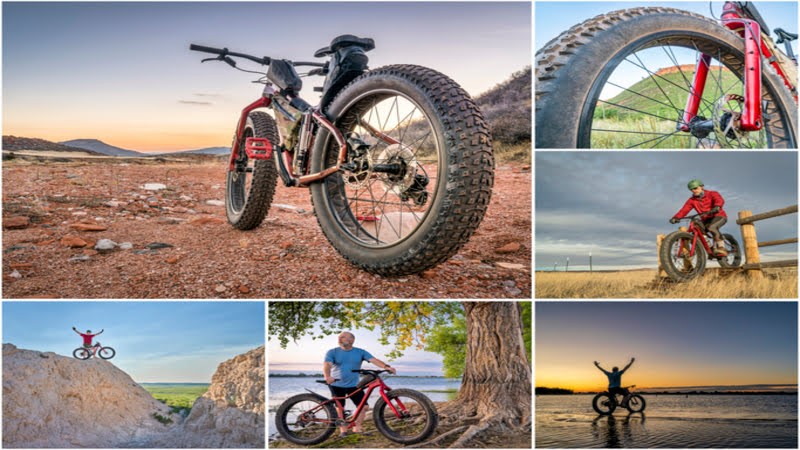
A Fat Bike is a type of off-road bicycle that features oversized tires typically ranging from 3.8 inches to 5 inches wide. These bikes are designed for use on soft, unstable terrain such as snow, sand, or mud.
The larger tires provide more surface area and better grip, allowing the rider to navigate through difficult terrain with greater ease.
What is a Fat Bike Used For?
Fat Bikes are commonly used for exploring off-road trails and terrain that would be inaccessible with a traditional mountain bike or road bike.
They are also used for winter riding, as the wider tires allow for better traction in snow and ice. Additionally, some people use Fat Bikes for commuting or everyday riding, as the wider tires provide a smoother ride on rough roads or paths.
Who Shouldn’t Use Fat Bikes?
Fat Bikes may not be suitable for riders who prioritize speed and efficiency over stability and control.
The wider tires can make the bike heavier and more difficult to handle, particularly on steep hills or tight turns. Additionally, the large tires may not be suitable for use on smooth, paved roads or paths.
Read: Fat Tire Bike 101- The Ultimate Knowledge Guide
11. Cargo Bikes
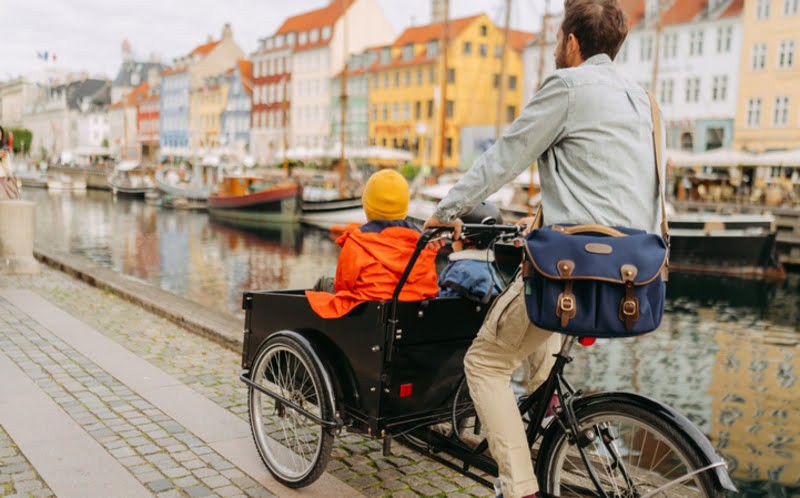
A cargo bike, also known as a freight bike, is a bicycle that is designed to carry heavy loads or bulky items. Cargo bikes typically have a longer frame, a sturdy build, and a variety of accessories that can be added on to increase their carrying capacity.
Cargo bikes come in a variety of styles, including two-wheeled and three-wheeled models. Two-wheeled cargo bikes are similar in appearance to traditional bicycles but with added cargo-carrying capacity.
Three-wheeled cargo bikes are often used for heavier loads or for stability when carrying large or awkwardly shaped items.
Cargo bikes are becoming increasingly popular as a sustainable transportation option, particularly in urban areas where congestion and air pollution are major concerns.
They are also an affordable alternative to motorized vehicles for small businesses and individuals looking to transport goods or equipment.
What is a Cargo Bike Used For?
Cargo bikes are commonly used by delivery companies to transport packages and other items around cities. Some cargo bikes are designed to carry children and other passengers, making them an excellent option for families who want to travel by bike.
Cargo bikes can even be used to transport groceries and other supplies, making them a great alternative to cars for short trips to the store.
Many people use cargo bikes for their daily commute to work, as they are a cost-effective and environmentally friendly alternative to driving.
Who Shouldn’t Use Cargo Bikes?
Cargo bikes may not be suitable for everyone. They can be heavy and difficult to maneuver, which may make them challenging for some people to ride.
Additionally, cargo bikes can be more expensive than traditional bikes, which may make them less accessible to some individuals.
12. Tandem Bikes
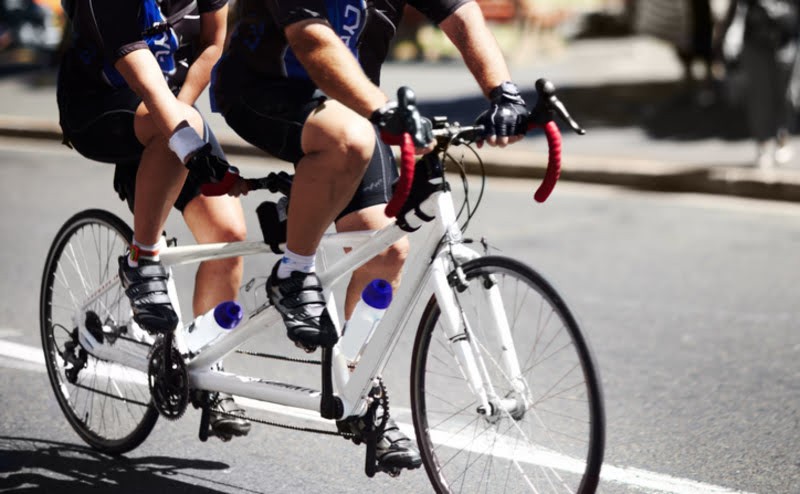
A tandem bike, also known as a double bike, is a bicycle designed to be ridden by two people. Tandem bikes have two seats, pedals, and handlebars and are built with a longer frame to accommodate both riders.
What is a Tandem Bike Used For?
Tandem bikes are often used for recreational purposes such as leisurely rides, touring, or long-distance cycling.
Tandem bikes can also be used for transportation purposes, especially for couples or families who want to ride together but have varying levels of fitness or cycling experience.
Tandem bikes are also popular among visually impaired individuals or those with disabilities, as the rear rider can act as a guide or provide extra support.
In some cases, tandem bikes can also be used for competitive cycling events such as road races, time trials, or even mountain biking.
Tandem bikes offer unique challenges and require communication and coordination between both riders to achieve optimal performance.
They are also popular for parents with children who are not yet able to ride their own bikes, as the child can sit in the back seat while the parent does the pedaling.
Who Shouldn’t Use Tandem Bikes?
Tandem bikes can be difficult to maneuver and require a lot of coordination between the riders.
They may not be suitable for individuals with mobility or balance issues or for those who are uncomfortable riding closely with another person.
Read: Double Your Fun and Speed with Tandem Bikes [Ultimate Guide]
13. BMX Bikes
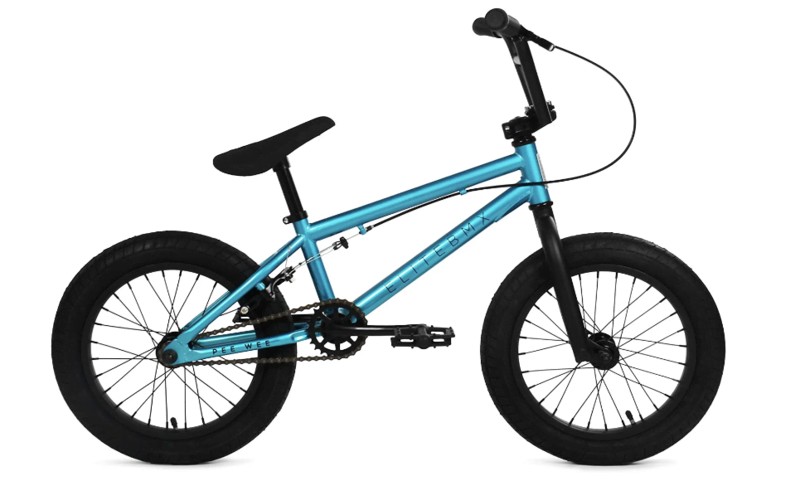
A BMX bike is a type of bicycle that is designed for off-road riding, freestyle tricks, and racing. BMX bikes are typically smaller than other bikes and are built with a lightweight frame, large knobby tires, and a single gear.
They also have a unique handlebar design, with a crossbar and a shorter stem, which provides better control and maneuverability during jumps and tricks.
What is a BMX Bike Used For?
BMX bikes are mainly used for off-road and urban riding, as well as in BMX racing and freestyle competitions.
Riders can perform various tricks, such as jumps, tailwhips, and barspins, on BMX bikes, making them a popular choice among adrenaline junkies and extreme sports enthusiasts.
BMX racing is also a competitive sport, with riders competing in time trials or head-to-head races on specially designed tracks.
Who Shouldn’t Use BMX Bikes?
People who are looking for a bike for casual or leisurely rides may not enjoy using a BMX bike, as they are designed specifically for off-road use and may not be comfortable for longer rides on paved roads.
Additionally, those who are not experienced riders may find it difficult to handle the jumps and tricks that BMX bikes are designed for.
Read BMX Bikes: A Versatile and Exciting Way to Get Around!
14. Folding Bikes
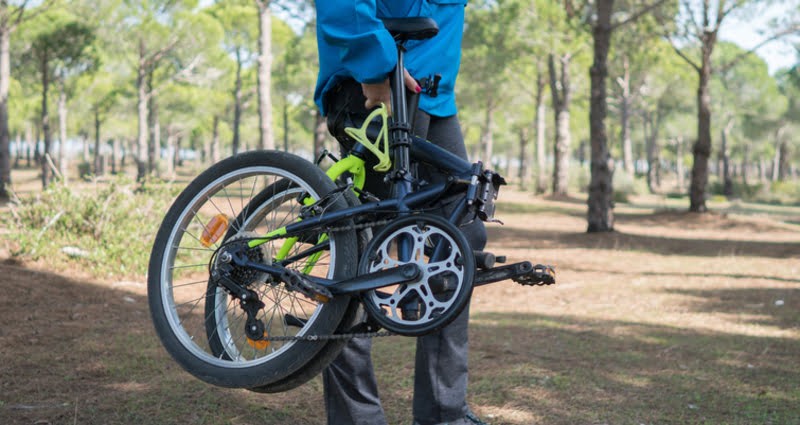
A folding bike is a type of bicycle that is designed to fold into a compact size for easy storage and transportation. These bikes typically have hinges and quick-release mechanisms that allow them to be folded quickly and easily.
What is a Folding Bike Used For?
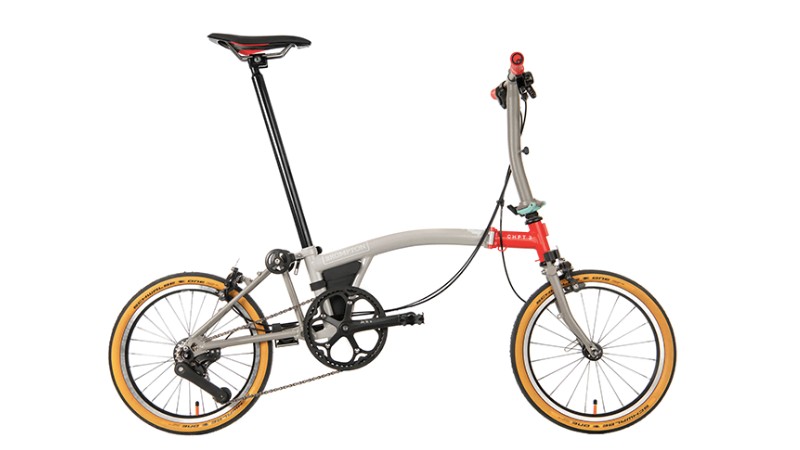
Folding bikes are used for a variety of purposes, including commuting, travel, and recreation.
They are especially popular among people who live in urban areas and need a compact, lightweight bike that can be easily carried onto public transportation or stored in a small apartment or office.
They are also a popular choice for people who enjoy recreational cycling and want a bike that they can easily transport to different locations.
Folding bikes are also used by travelers who want to explore new destinations by bike. They can be packed into a small suitcase or backpack, making them a convenient option for people who want to explore new cities or ride on scenic trails while on vacation.
Who Shouldn’t Use Folding Bikes?
Folding bikes may not be suitable for everyone. Riders who prioritize speed or performance may not find folding bikes to be a good fit.
Additionally, riders who are taller or heavier may find that some models of folding bikes are not comfortable for them.
Read: A Complete Guide to Folding Bikes: Pros, Cons & Expert Advice
15. Recumbent Bikes
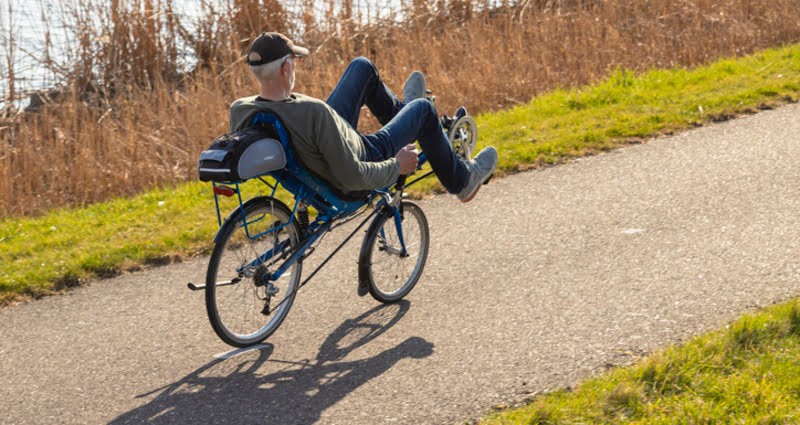
A recumbent bike is a type of bicycle that places the rider in a reclined position with the pedals positioned in front of the body. This design provides a comfortable and ergonomic riding experience with less strain on the back and neck.
What is a Recumbent Bike Used For?
Recumbent bicycles are typically used for recreational purposes, such as leisurely rides on bike paths or in parks.
They are also popular for long-distance touring and commuting, as they offer a more comfortable and efficient riding position compared to traditional bikes.
In addition, recumbent bikes are often used for fitness purposes, as they offer a low-impact workout that is easy on the joints.
They can also be used for rehabilitation, as the reclined position reduces stress on the body and allows for gentle recovery.
It is also used by individuals with certain physical limitations or injuries that make it difficult for them to ride a conventional bike.
Recumbent bikes are ideal for individuals with back or joint pain, as they offer a more comfortable and supportive riding position. They are also suitable for individuals who have difficulty balancing or need extra support while cycling.
Who Shouldn’t Use Recumbent Bikes?
Recumbent bikes may not be suitable for individuals who prefer a more aggressive, upright riding position or those who want to ride fast or cover long distances quickly.
Additionally, the design of recumbent bikes may make them less maneuverable in certain situations, such as navigating tight spaces or making sharp turns.
Read: Recumbent Bikes: Best Exercise Option to Supercharge Your Fitness
16. Adult Tricycles/Trikes
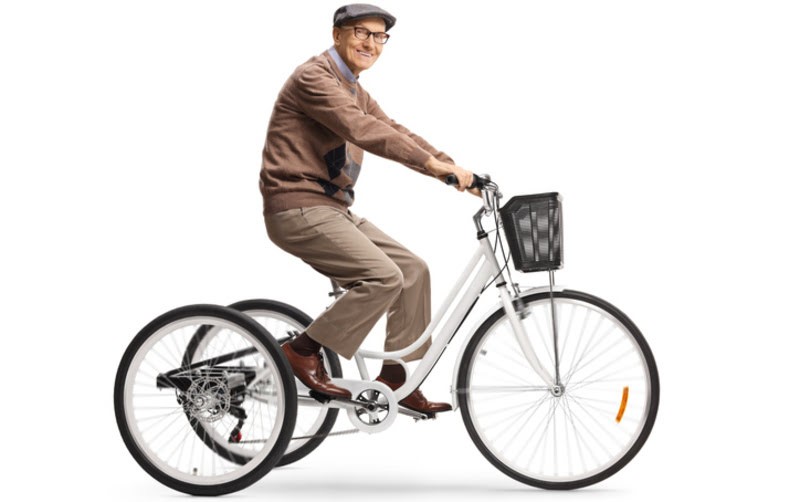
A trike bike, also known as a tricycle or a three-wheeled bike, is a type of bike that has three wheels instead of two.
Unlike traditional bikes, trike bikes provide more stability and balance, making them a popular choice for people who are not confident riding a two-wheeled bike or those with physical limitations.
What is a Tricycle/Trike Bike Used For?
Trike bikes are used for various purposes, such as leisure, commuting, and transportation. They are often used by older adults, people with disabilities, and individuals who require extra stability while cycling.
Trike bikes are also used for commercial purposes such as delivery services, vending, and advertising.
In addition, some models of trike bikes are designed for off-road use, such as mountain trikes and recumbent trikes. These trikes are used for adventurous activities and provide a unique experience for cycling enthusiasts.
Who Shouldn’t Use Trike Bikes?
Trike bikes may not be suitable for individuals who require a high level of speed or agility, as they are generally slower and less maneuverable than traditional bicycles.
17. Lowrider Bikes
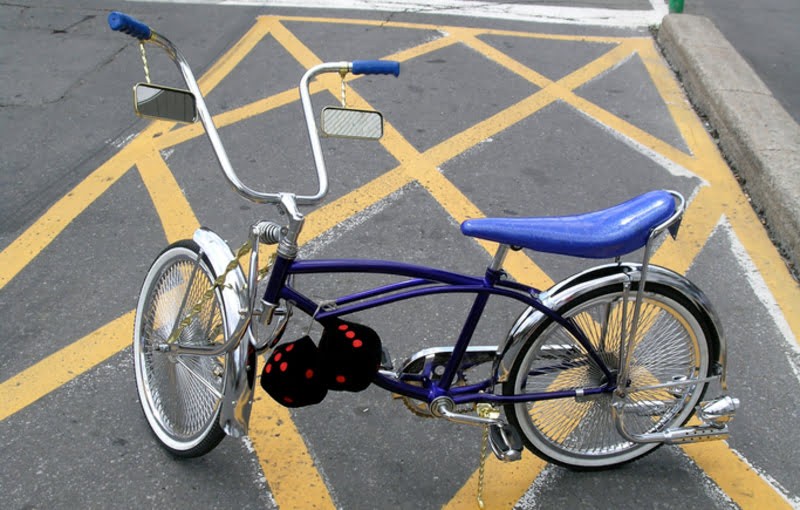
A lowrider bike is a customized bicycle that has been modified to have a lower rider position and a unique appearance.
Lowrider bikes typically have elongated frames and smaller wheels and are adorned with flashy accessories such as chrome rims, a long banana seat, and custom paint jobs.
What is a Lowrider Bike Used For?
Lowrider bikes are often used for leisurely rides, cruising, and showing off. They are not typically used for transportation or long-distance rides, as they are not designed for speed or efficiency.
Lowrider bikes are popular among those who enjoy the aesthetic and cultural aspects of the lowrider subculture, as well as those who enjoy customizing and personalizing their bikes.
Who Shouldn’t Use Lowrider Bicycles?
Lowrider bikes are not recommended for individuals who are looking for a practical mode of transportation or who need a bike for long-distance rides. They are also not recommended for individuals who prioritize speed and efficiency in their biking type experience.
Read: Lowrider Bikes — Unique Build for A Smooth Journey
18. Women’s Bikes
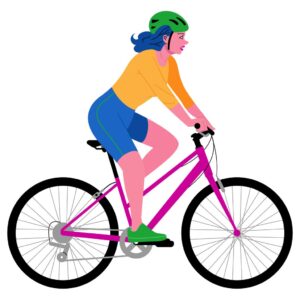
There is no such thing as a “women’s bike” in the sense that bikes are not gender-specific.
However, some manufacturers may design bikes with features that are more comfortable for people with certain body types or preferences, which are marketed toward women.
Bikes marketed towards women may have a shorter top tube, narrower handlebars, and a more upright riding position than unisex or men’s bikes.
These features may be more comfortable for people with shorter torsos or smaller hands, and they may also be more suitable for riding in urban environments.
What is a Women’s Bike Used For?
Women’s bikes can be used for a wide range of activities, such as commuting, leisure riding, fitness, and competition. They can also be used on different types of terrain, such as roads, trails, and gravel paths.
Who Shouldn’t Use Women’s Bicycles?
Ultimately, the decision to use a women’s bike should be based on individual needs and preferences rather than gender.
People who feel more comfortable on a women’s bike should use one, while those who prefer a unisex or men’s bike should use one instead.
Read: In What Ways Do Men’s and Women’s Bikes Differ
19. Fitness Bikes
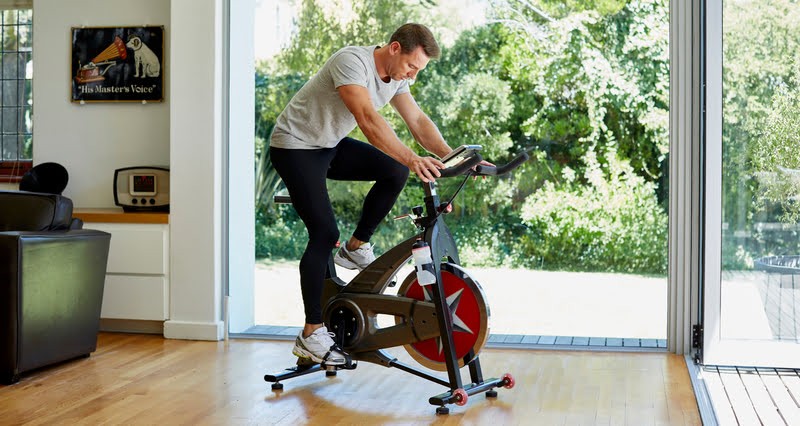
A fitness bike is a type of exercise bike that is designed to provide a low-impact cardiovascular workout. These bikes are typically stationary and allow the rider to sit in an upright position, with the pedals located below the seat.
What is a Fitness Bike Used For?
Fitness bikes are used primarily for cardiovascular exercise, which can help to improve heart and lung health, boost energy levels, and burn calories. They are also used to build lower body strength and endurance, particularly in the legs and glutes.
Anyone can use a fitness bike, regardless of age or fitness level. They are particularly well-suited for people who are new to exercise, recovering from an injury, or looking for a low-impact alternative to running or other high-impact activities.
Who Shouldn’t Use Fitness Bicycles?
There are some people who may not be suited to using a fitness bike, such as those with certain medical conditions that make it difficult or uncomfortable to sit for extended periods of time or those with balance issues or mobility impairments that make it difficult to mount or dismount the bike safely.
As with any exercise equipment, it is always a good idea to consult with a healthcare professional before beginning a fitness program to determine if a fitness bike or any other exercise equipment is appropriate for your individual needs and goals.
Read: Supercharge Your Health with Fitness Bikes
20. Dual-Sport Bikes
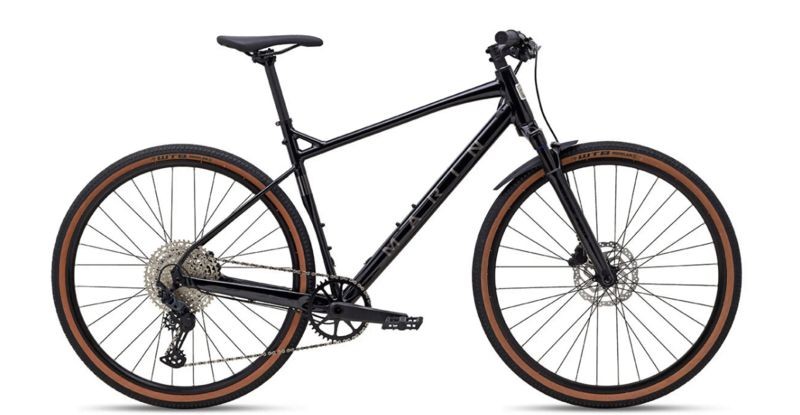
A dual-sport bike, also known as an adventure bike or a hybrid bike, is a type of bicycle that is designed to handle a variety of terrain, from paved roads to off-road trails.
It features a sturdy frame, suspension system, and wider tires that provide a smooth, stable ride on a variety of surfaces.
What is a Dual-Sport Bike Used For?
Dual-sport bikes are primarily used for adventure cycling, touring, and commuting, as they are designed to provide a comfortable and efficient ride on both paved roads and off-road trails.
They are also a popular choice for those who want a versatile bike that can handle a variety of terrain and conditions.
Who Shouldn’t Use Dual-Sport Bicycles?
They may not be suitable for experienced cyclists who are looking for a bike for racing or fast-paced group rides.
Read: Unleash Speed, Distance & Freedom with Dual Sport Bikes
21. Comfort Bikes
A comfort bike, also known as a hybrid bike or a leisure bike, is a type of bicycle that is designed for recreational riding and casual cycling.
It features a comfortable, upright riding position, a cushioned seat, and wider tires that provide a smooth, stable ride on a variety of surfaces.
What is a Comfort Bike Used For?
Comfort bikes are primarily used for leisurely rides around town or on bike paths, as they are designed to provide a comfortable and enjoyable cycling experience for riders of all ages and abilities.
They are also a popular choice for commuters who want a comfortable and efficient bike for daily use.
They are particularly popular among seniors and riders who have mobility or health issues that make traditional road bikes less comfortable or practical.
Who Shouldn’t Use Comfort Bicycles?
Comfort bikes are not designed for high-speed or competitive cycling, as their heavy construction and wide tires can make them less efficient than traditional road bikes.
As such, they may not be suitable for experienced cyclists who are looking for high-performance bikes for racing or long-distance rides.
Read: Comfort Bikes — Experience Ultimate Comfort & Convenience Like No Other!
22. Klunker bike
A Klunker bike, also known as a mountain bike or a retro cruiser, is a type of bicycle that was popularized in the 1970s. It features a heavy-duty frame and wide, knobby tires that are designed to handle rough terrain and off-road conditions.
What is a Klunker Bike Used For?
Klunker bikes are primarily used for off-road cycling and mountain biking, as they are designed to provide a smooth, stable ride on rough terrain.
They are also popular among retro cycling enthusiasts who appreciate the vintage design and rugged construction of these bikes.
They are particularly popular among mountain bikers and outdoor enthusiasts who enjoy the challenge of navigating difficult terrain and the thrill of downhill descents.
Who Shouldn’t Use Klunker Bicycles?
Riding a Klunker bike requires a certain level of skill and experience, as the rugged design and heavy weight of these bikes can make them more difficult to handle than traditional road bikes.
As such, they may not be suitable for beginners or those who are not comfortable with off-road cycling.
Additionally, riders should always wear appropriate safety gear, including a helmet and protective padding, when using a Klunker bike to reduce the risk of injury.
Read: Retro Reloaded Klunker Bikes for a Powerful Take on Classic Cycling
23. Swing Bike
A swing bike is a type of bicycle that features a unique frame design with a pivot point in the middle. This allows the rider to swing the back wheel from side to side, creating a swerving motion that can be used to perform tricks and maneuvers.
What is a Swing Bike Used For?
Swing bikes are often used in freestyle cycling competitions and exhibitions, where riders can showcase their skills and perform a range of stunts and tricks.
Some of the common tricks that can be performed on a swing bike include wheelies, bar spins, and tail whips.
They can be a great option for experienced riders who are looking to push the boundaries of their cycling abilities and explore new possibilities in terms of tricks and maneuvers.
Who Shouldn’t Use Swing Bicycles?
It is important to note that swing bikes require a certain level of balance, coordination, and skill to ride safely.
As such, they are not recommended for beginners or those who are not comfortable with the swerving motion that is created when riding a swing bike.
Read: Swing Bikes — The Best Way to Add Excitement to Your Ride
24. Rickshaws
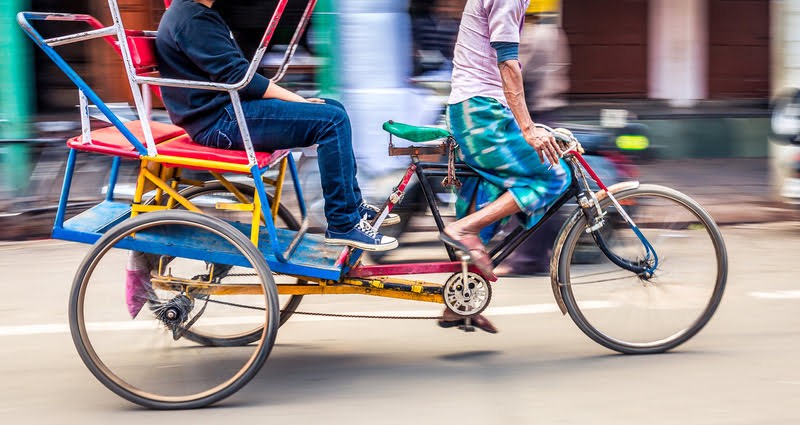
A rickshaw bike, also known as a pedicab or cycle rickshaw, is a type of bicycle that is designed to carry passengers or cargo.
It features a three-wheeled design with a seat or compartment in the back where passengers can sit, along with pedals and handlebars for the rider in the front.
What is a Rickshaw Bike Used For?
Rickshaw bikes are primarily used for transportation and sightseeing, particularly in densely populated urban areas where traffic congestion and limited parking can make traditional forms of transportation less convenient.
They are also commonly used for commercial purposes, such as delivering goods or advertising.
Rickshaw bikes are suitable for anyone who wants to transport passengers or cargo in a fun, eco-friendly way.
They are also a great option for small business owners who need to transport goods or advertise their services in a busy urban environment.
Who Shouldn’t Use Rickshaw Types of Bicycles?
It is important to note that riding a rickshaw bike requires a certain level of physical fitness and stamina, as the rider is responsible for pedaling and steering the bike while carrying passengers or cargo.
As such, they may not be suitable for individuals who have mobility or health issues that prevent them from pedaling for extended periods of time.
Additionally, riders should be comfortable with navigating busy streets and interacting with passengers in a friendly and professional manner.
To Wrap Up — Different Types of Bikes
In this ultimate guide, you have explored the most common types of bikes available, including road bikes, mountain bikes, hybrid bikes, cruiser bikes, and more.
I have discussed the features and benefits of each type of bike and who they are best suited for.
When choosing a bike, it is important to consider your riding style, preferences, and needs. Take into account the terrain and conditions you will be riding on, as well as your experience level and physical abilities.
By choosing the right type of bike, you can enjoy a comfortable and efficient ride that is tailored to your needs and preferences. Whether you’re a casual rider or a seasoned cyclist, the perfect bike is out there waiting for you.
Else, if you have any suggestions or doubts, feel free to drop us a comment below. I will be more than happy to assist you with your query. Please like, share, and follow our Facebook Page for more guides like this.
Types of Bikes – Frequently Asked Questions
What is the most popular type of bike?
The most popular type of bike can vary depending on the region and the purpose of the bike. However, in general, the most popular type of bike worldwide is the road bike.
Road bikes are designed for speed and efficiency on smooth surfaces, making them popular among fitness enthusiasts, commuters, and competitive cyclists.
How many types of bicycles are there?
There are many different types of bicycles, and the exact number can vary depending on how you categorize them.
However, some of the most common types of bicycles include Road Bikes, Mountain Bikes, Hybrid Bikes, Cruiser Bikes, Folding Bikes, Electric Bikes, BMX Bikes, Cyclocross Bikes, Touring Bikes, Recumbent Bikes, Tandem Bikes, Fat Bikes, Kids Bikes and so on.
These are just some of the most common types of bicycles, and there may be other specialized bikes that are designed for specific purposes or activities.
Related:
